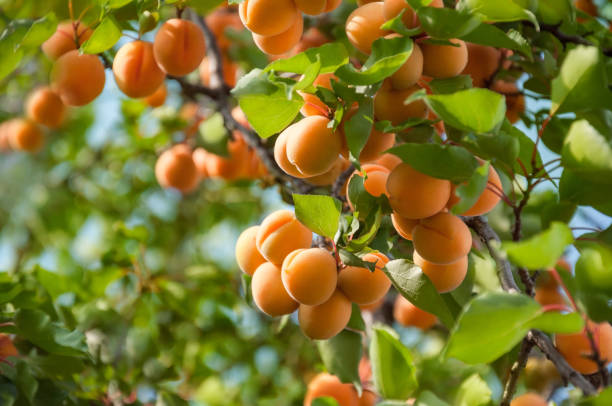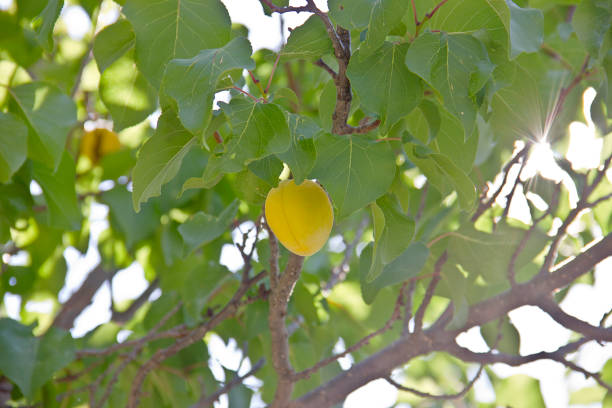How To Grow Apricot Seed? Tips And Tricks For Beginners!
To grow apricot from seeds, you need to gather fruit, remove the seeds, grow it on a fridge, plant it where they can enjoy full sun and good soil, etc. Your apricot trees will grow fast if you follow these simple steps and tips! Seeds need to be planted as early as possible so that weather conditions don’t affect the plant. Therefore it is important to get them before spring comes back. Remember, too much precipitation, hail, or even frost can kill their seedlings. So it is good if there aren’t any of those in your area during this time. Also, make sure that you don’t keep the tiny plant in a humid place. Or it will be easy to rot and die. Getting them all set up before you put them outside your house is a good idea because bugs and squirrels might try to get their hands on some of the fruits. Try not to plant too close together since the trees require space. Continue reading to know more.

Table of Contents
Growing Apricot Seeds
Step 1: Prepare the Seeds
Fully ripe fruits should have their pits removed. A brush can remove any fruit matter from the surface then allow it to dry. Apply pressure to the seams of the seed with a flat tool such as a board, nutcracker, or knife to crack it open. To stratify the seed, you’ll need to remove the almond-shaped seeds from the pod and soak them in warm water.
Gather seeds from apricots that are in the middle to the end of their season. To avoid cross-pollination between trees of the same genus, ensure that the seed comes from fruit not close to any trees of the same species. It’s a good idea to have a few extra seeds on hand if any of the seeds you plant don’t take.
Step 2: Grow the Seeds in Fridge
In a refrigerator, keep the seeds germinating. Before putting the seeds and peat moss in a jar or a plastic bag, they should be squeezed out. A refrigerator temperature of 32 to 45 degrees Fahrenheit is ideal. If you see sprouts daily, it’s time to plant!
Sprouting a seed can take anywhere from 4 to 6 weeks. Seedlings should be kept under lights or in a bright window until they are ready to be transplanted into a garden.
Step 3: Pick a Spot That Gets Plenty of Sun and Has Healthy Soil
Choose a place that gets a lot of sun and has good soil. While retaining its ability to hold water, the soil should be able to drain water from it. An apricot likes slightly acidic soil, in the range of 6.5-8.0. Keep an eye on the soil for weeds and make sure it isn’t too loose or sandy.
Places with previously grown eggplant, tomatoes, peppers, potatoes, strawberries, and raspberries must be avoided. A disease called verticillium wilt can be caused by eating these crops.
Step 4: Dig a Large Hole
A 6 in (15 cm) hole should be dug for a seedling that has germinated. There is a wide range in how much depth you should go, but make sure it is enough to cover the roots where they were previously protected. Add a layer of well-rotted compost to the hole and tamp it down firmly with your hands.
Step 5: Soak the Seed in the Hole
Make a hole in the ground and soak the seedling or sapling thoroughly. The seed should be covered in soil, and a screen layer should be placed over the area to keep animals away. If you’re planting a sapling, make sure the roots are evenly distributed throughout the hole to prevent damage. Fill in the area with soil to the same level as when it was in the container.
Step 6: Water Frequently
Make sure the area is well-watered at all times. Cool climate residents should water their plants only once per week, while hot climate residents should water three times weekly.
Step 7: Remove the Screen
Get out of the way of the screen when you see a tiny tree sprouting up. To avoid suffocating your new tree, remove the screen as soon as the roots break through the soil’s top layer. Protecting a tree from hungry animals may necessitate the construction of a wire or wooden fence.

Step 8: During Its First Year, Cut It Down
Make sure to put a metal stake in the ground about 1.5 feet (0.46 m) from each side of the tree. Then, tie a soft material, such as canvas straps, around the middle of the tree. Metal and wire could hurt the trunk. You might not need to stake your plants if you live in a place that isn’t very windy. Don’t stake a tree if it gets a lot of wind or if it’s leaning.
Step 9: Apply Pesticides if Bugs Show Up
Pesticides should be used if insects are found. Spray Chlorothalonil on branches just before and after each rain during bloom to ward off brown rot (a fungus disease). You can also use an antifungal apricot variety like “Harglow” resistant to brown rot (a disease). Spray the trunk with an all-purpose fruit spray to control rose chafers, oriental fruit moths, and peach tree borers.
Fruits cannot develop without the help of pollinators. Do not spray pesticides on trees unless insects are causing significant harm and you don’t want to scare away your little helpers. Be careful not to spray any pesticides on the fruits of your tree if it is producing anything. Apricot trees should not be treated with pesticides containing sulfur. Your local nursery is a good place to start when it comes to pesticides.
Step 10: Fertilize
Fertilize your lawn in the dead of the year. Suppose you’d like to help your plants cope with the additional demands of fruit production. You can apply fertilizer (a low-nitrogen, complete fertilizer) in the late winter and then once more during the fruiting period. Compost acts as the tree’s first fertilizer, so you won’t have to buy any at planting time.
Step 11: Expect Fruit in Three to Four Years
Apricot blossoms are extremely susceptible to frost damage and may require winter protection in a garage or greenhouse.
Step 12: Prune
Pruning any diseased branches or leaves will help prevent the further spread of the disease. There will be wilted blossoms, brown leaves that droop to the ground, and shriveled and dark fruit on “sick” trees (“mummified”). Keep the infection from spreading by spraying the tree with an antifungal agent.
It’s time to prune when the tree’s top appears full and green, but the bottom appears wilted and thin. This means that the tree isn’t getting enough sunlight at the base because the top layers obstruct the view. Branches that no longer bear fruit or are over six years old should be removed.

Step 13: Harvest
Your apricots are ready to be harvested. Midsummer to early autumn is prime time for picking apricots. It will be obvious when they’re done if they’re soft, fuzzy, and completely orange.
